Netgear ReadyNAS RN202 2-bay NAS Review
by Ganesh T S on September 25, 2015 2:30 PM EST- Posted in
- NAS
- Storage
- NetGear
- Annapurna Labs
Single Client Performance - CIFS & iSCSI on Windows
The single client CIFS and iSCSI performance of the Netgear RN202 was evaluated on the Windows platforms using Intel NASPT and our standard robocopy benchmark. This was run from one of the virtual machines in our NAS testbed. All data for the robocopy benchmark on the client side was put in a RAM disk (created using OSFMount) to ensure that the client's storage system shortcomings wouldn't affect the benchmark results. It must be noted that all the shares / iSCSI LUNs are created in a RAID-1 volume.
The main surprise in the results below is that the RN202 performs better than the RN312 for certain access traces. This could be due to performance upgrades in the firmware. In general, the reads are very fast - easily the best amongst the NAS units we have evaluated, while writes tend to come towards the middle of the pack. The fast reads skew the numbers heavily in the read-centric workloads.
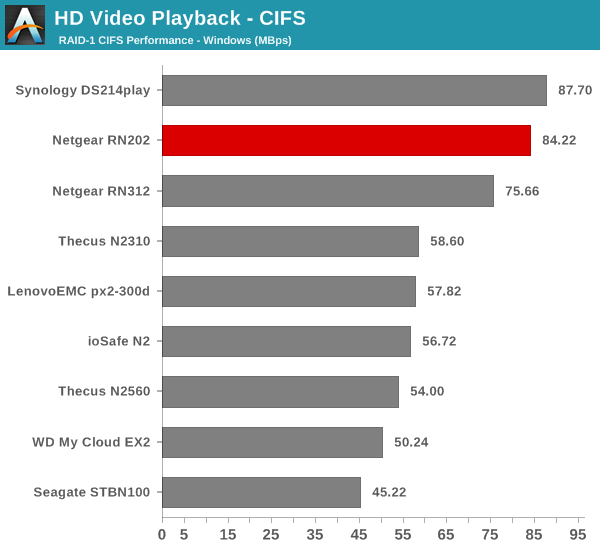
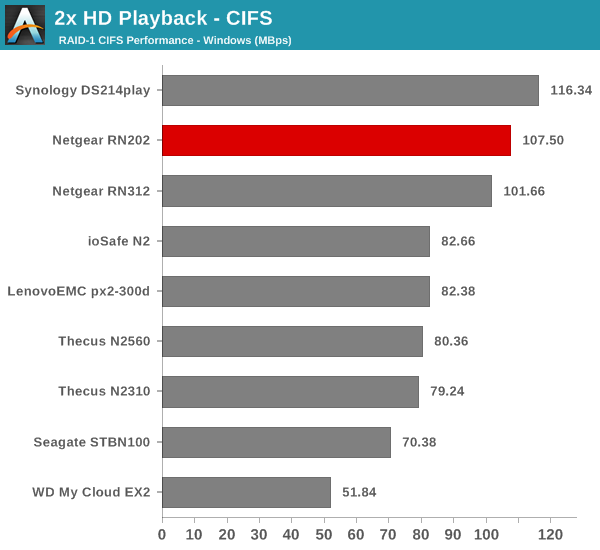
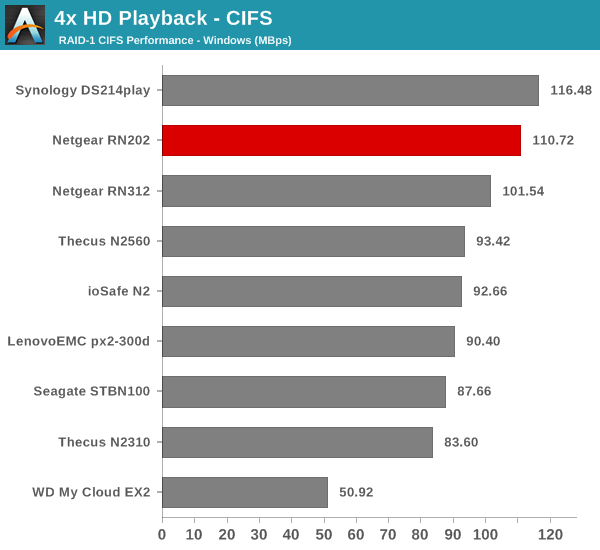
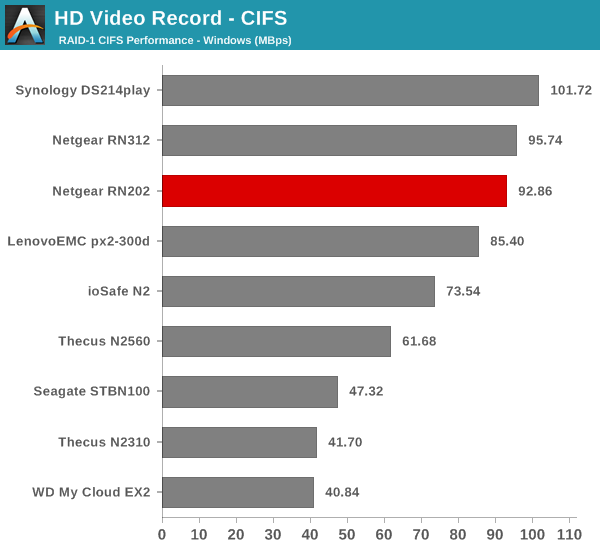
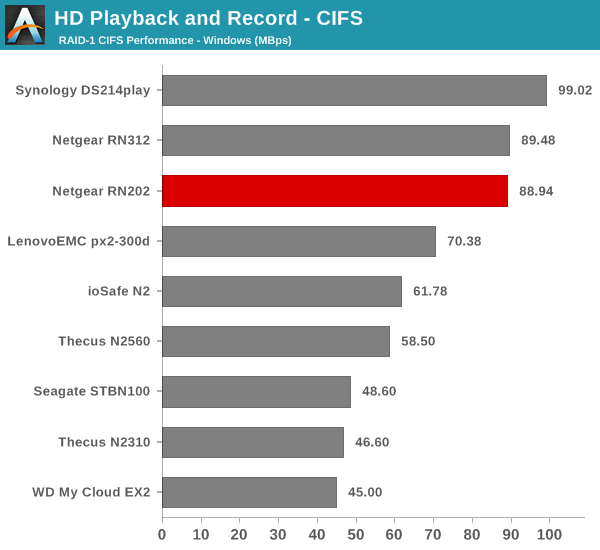
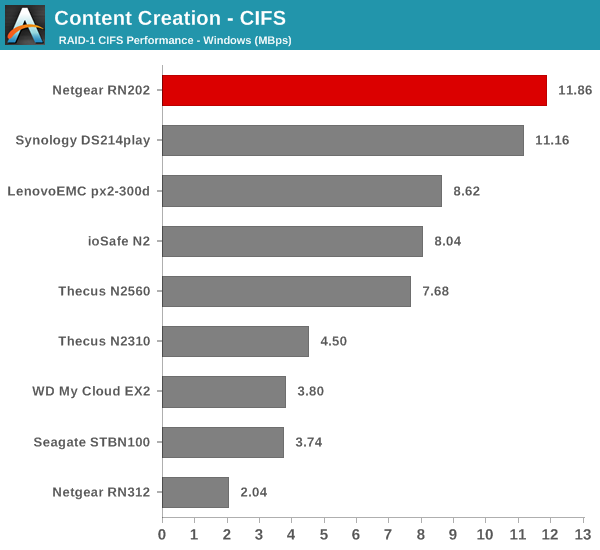
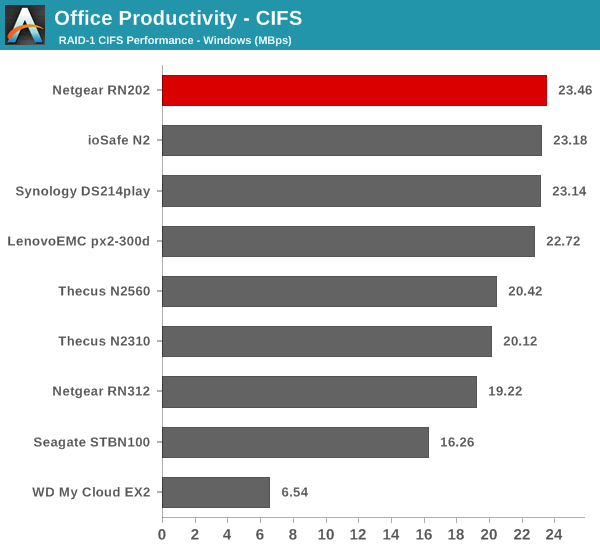
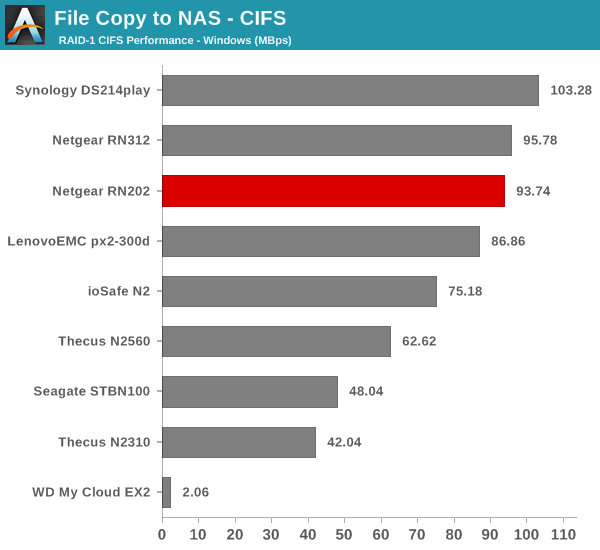
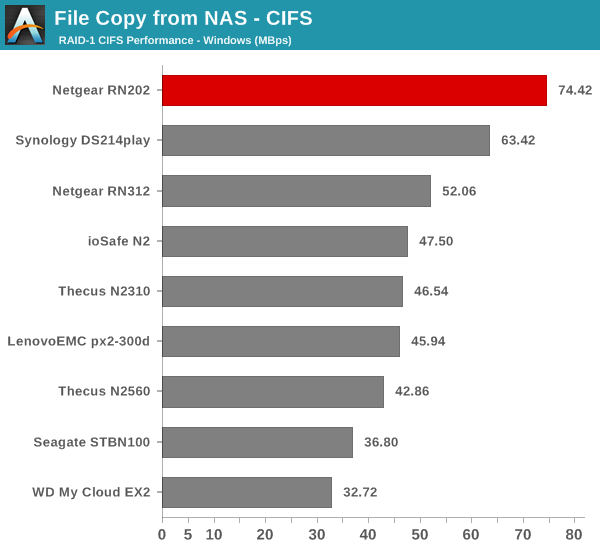
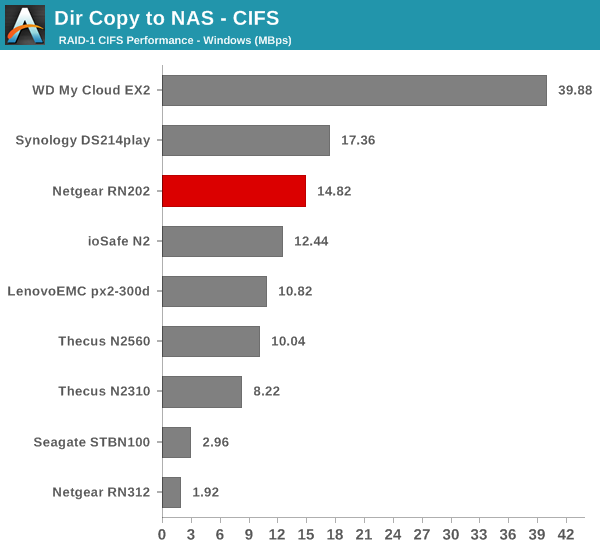
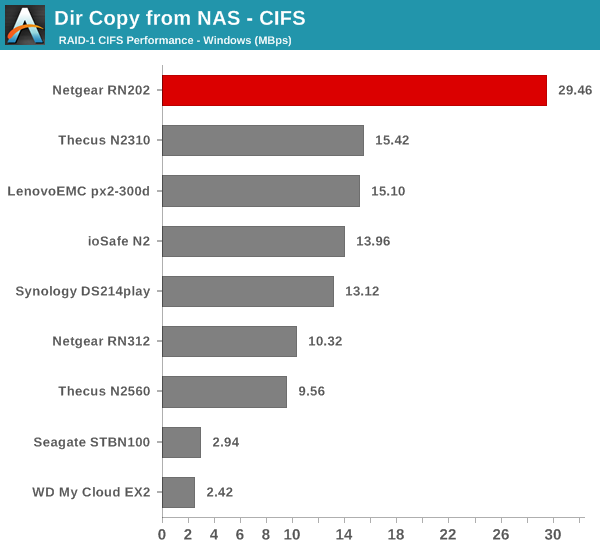
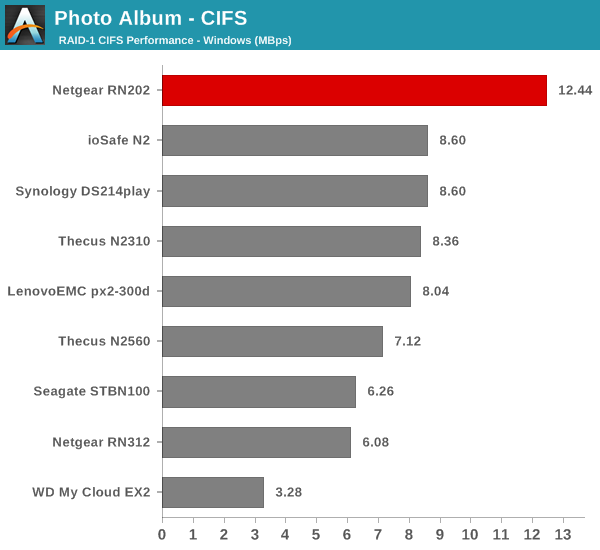
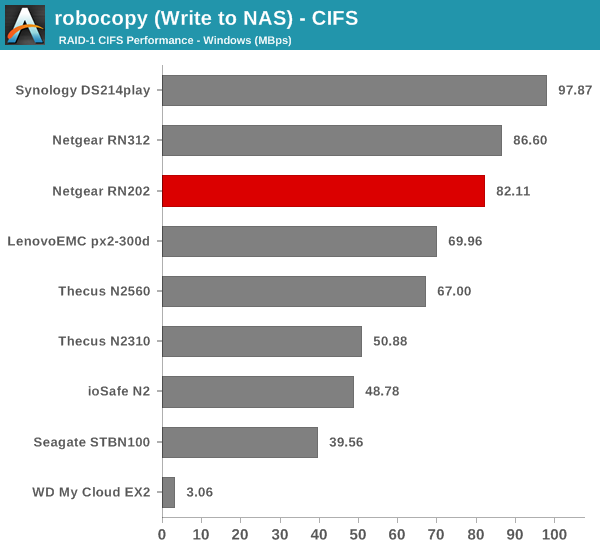

We created a 250 GB iSCSI LUN / target and mapped it on to a Windows VM in our testbed. The same NASPT benchmarks were run and the results are presented below. The observations we had in the CIFS subsection above hold true here too.
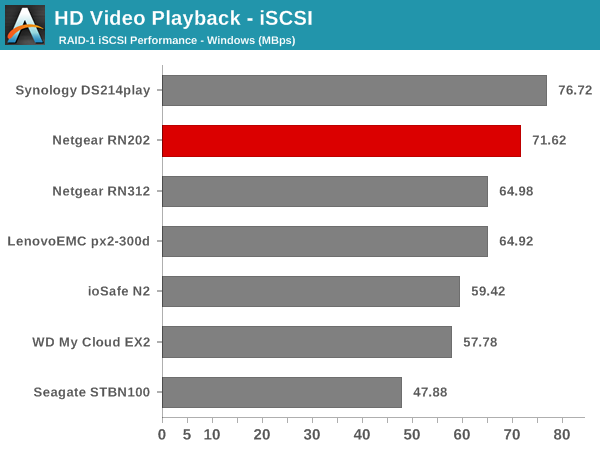
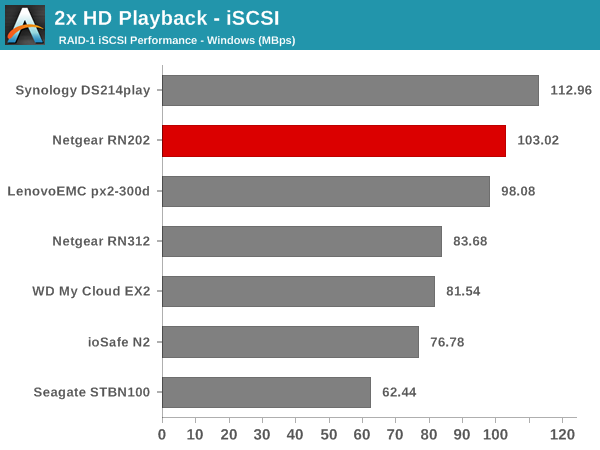
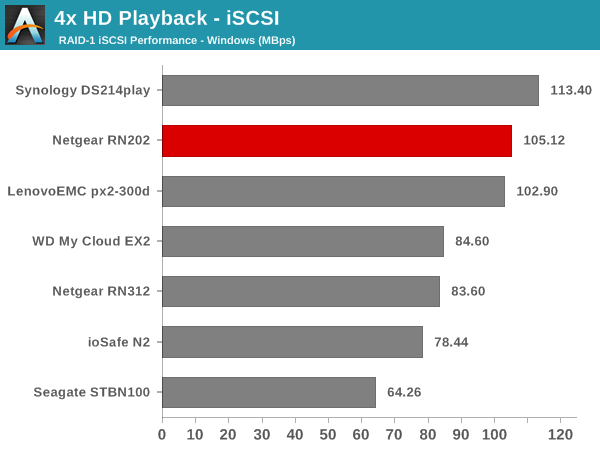
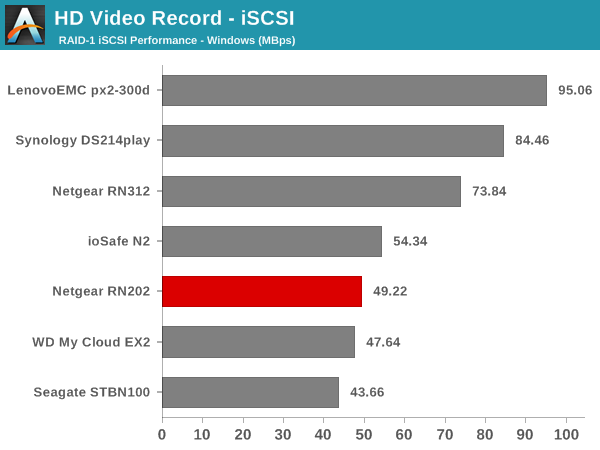
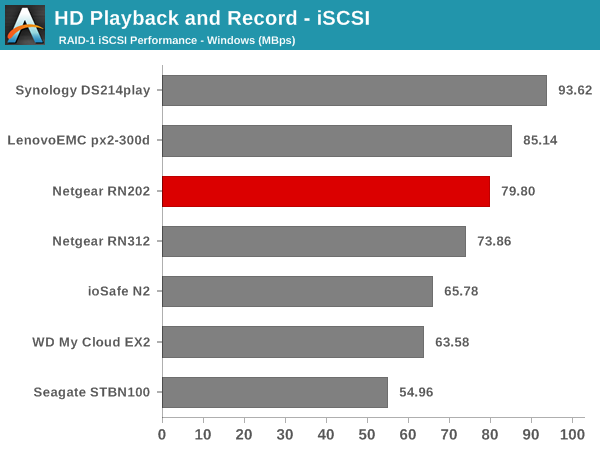
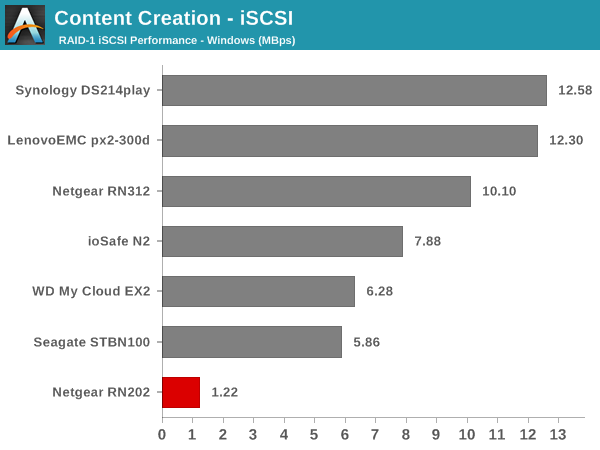

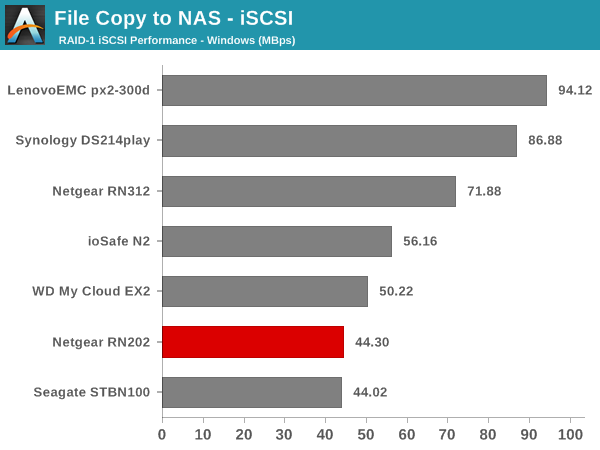
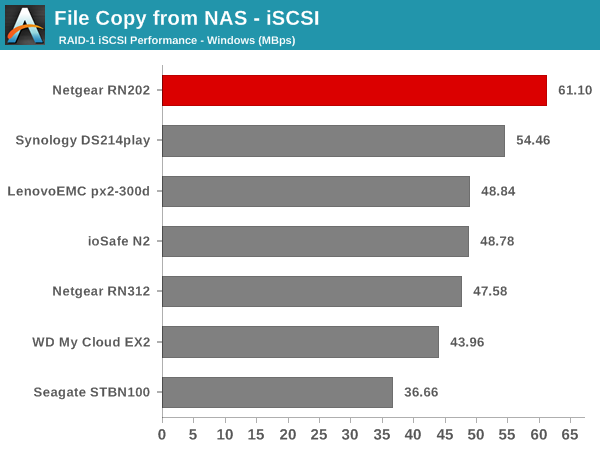
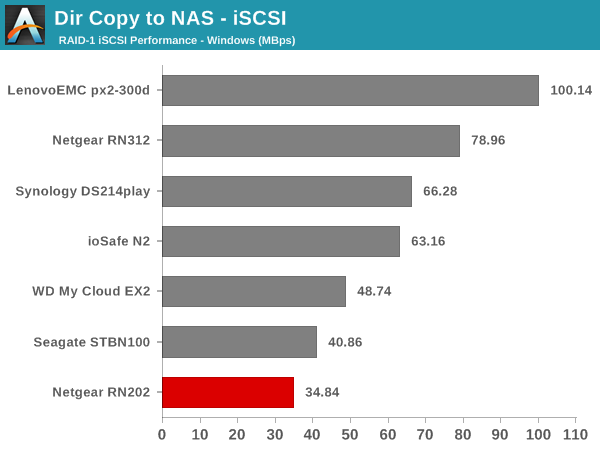
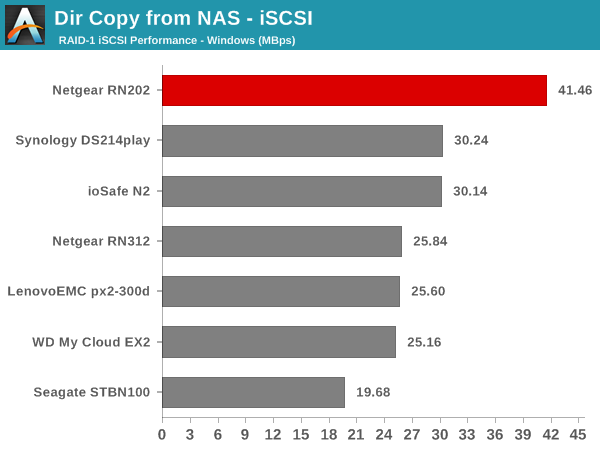
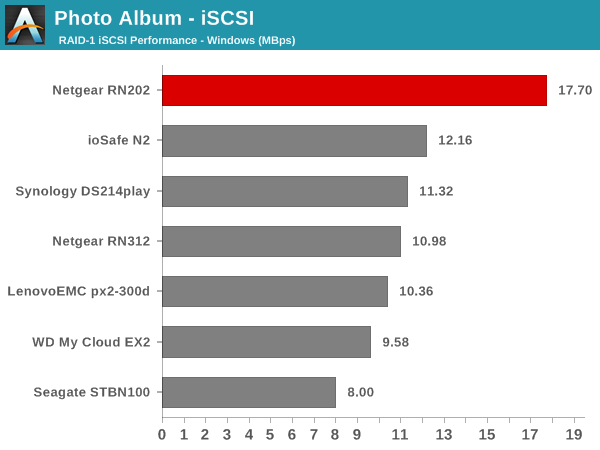
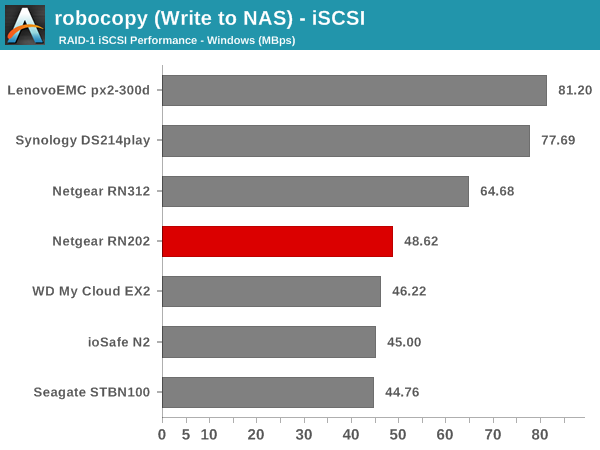
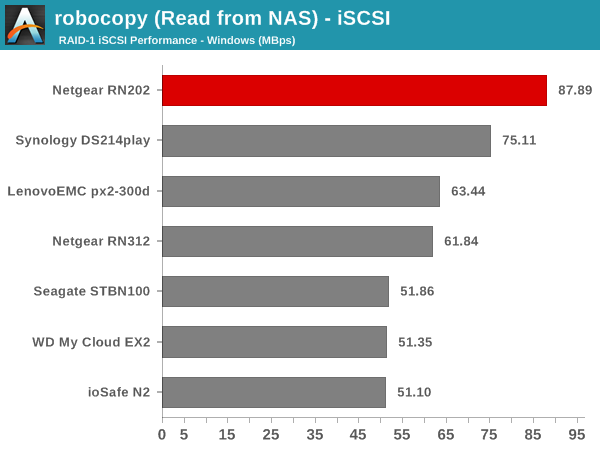
The iSCSI performance is similar to the CIFS performance. The writes suffer heavily, but the read performance is again very good enabling the unit to emerge as the clear leader in certain workloads. Note that the test share was configured with bit-rot protection (something users expect from any btrfs-enabled NAS) and a weekly snapshot schedule, but no compression was in play during the benchmarking process.










22 Comments
View All Comments
ganeshts - Saturday, September 26, 2015 - link
Yes, they do show up.Mickatroid - Saturday, September 26, 2015 - link
"four bays present the best balance between cost and expandability for home consumers ... two bays make the cut for many usage scenarios" Surely it is the rare home consumer who needs more than 4tb on their network? I suppose if they are amassing hidef video somehow more could be required. 4 bays take up quite a bit more space too. I think it is more accurate to say 'to bays make the cut for the vast majority of home use scenarios, ever with RAID 1'.azazel1024 - Saturday, September 26, 2015 - link
Personally I've got 6TB of storage running on my server, 2x3TB in RAID0 for performance, but I have the redundancy because it is a mirror of the data on my desktop and I periodically back it up to a 5TB USB3 drive also. Of that, I have 3.18GiB free of the formatted 5.4GiB of storage. I would not consider my video library small at >1200 movies and TV episodes (point of fact, I actually own all of it on DVDs or BR. Well, okay, pretty much all of it. I probably have donated or whatever a few of the DVDs/BR or lost a few over the years, but 80+% of those I do actually own, I just HAVE physical disks and the limitations that imposes). Now if I had kept all of them as disk images, I might not fit it all, but frankly high bit rate transcodes are good enough in most of the cases and 720p for a lot of the stuff that isn't image crucial (yes, because I don't need to watch most comedies or chick flicks in 1080p. Thank you very much).Even with slow growth of that, plus all of the photos and video I shot with my camera and phone, that takes care of me for probably 4-5 years before I have to worry about running short on storage (less than 25% remaining). I would consider my needs greater than an average home consumer. So I'd say that a 2 bay NAS probably is enough for 98% of home consumers. Maybe higher.
dimadima - Monday, September 28, 2015 - link
I was hoping to see a comparison of checksums On vs. Off to see the performance penalty it introduces.Could you please run some benchmarks?
dimadima - Thursday, October 1, 2015 - link
anyone cares or knows about the impact of checksumming on speed? was the review done with checksumming on or off?would the author care to confirm?
thanks
dimadima - Tuesday, October 6, 2015 - link
hello:(Kutark - Tuesday, September 29, 2015 - link
Potentially stupid question, but do these just do striping for covering disk failures? I've always thought you couldnt really acheive what youg et with 4/5/8 bay NAS's where if a disk fails, you swap it out and it rebuilds the volume and you move on with life.How is this acheived with a 2bay?
Margalus - Wednesday, September 30, 2015 - link
This is not achieved with the 2 disk models. You will be limited to things like Raid 0 which is just striping, no parity so no recovery if one fails, a very fast, but very risky method. Raid 1, mirroring which just makes 2 copies of the data, one on each disk so you end up with 2 exact copies. Great for mission critical data, but it is basically just one normal disk. And JBOD, Just a Bunch of Disks.You need a minimum of 3 disks to do something like Raid 5 which is striping with parity so that you can rebuild if one disk fails.
Kutark - Wednesday, September 30, 2015 - link
Ok, i had a sneaking suspicion that was the case. So basically im looking at minimum of a 4bay, preferrably a 5bay to have something like a raid 5 or 6adithyay328 - Thursday, October 1, 2015 - link
I always get hyped whenever I see a NAS, but I'm not sure why.